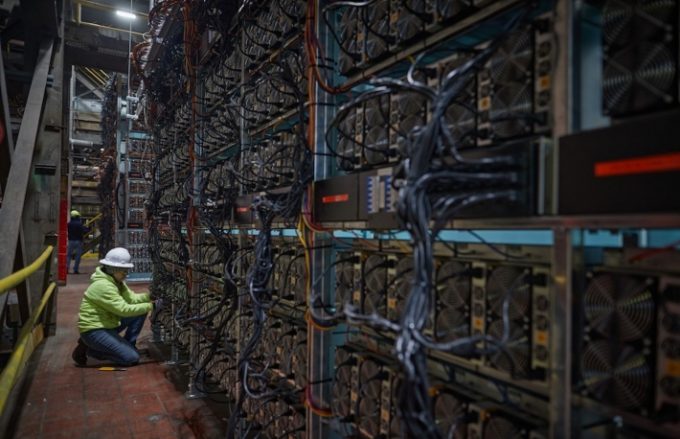Analysts remain optimistic about bitcoin despite regulatory uncertainty in the U.S. regarding crypto tax rules.
“The crypto sector itself is new, and leaning on a nascent technology industry for taxes could impair its growth,” Lucia della Ventura, a researcher at Trinity College Dublin and legal compliance manager at financial software company Ledgermatic, wrote in an email to CoinDesk.
“It is necessary to wait for the final vote, taking into account that several amendments have been tabled as they can potentially change the impact of the bill for companies,” Ventura wrote.
Latest prices
Cryptocurrencies:
- Bitcoin (BTC) $45593, -1.37%
- Ether (ETH) $3135.1, -0.33%
Traditional markets:
- S&P 500: 4436.8, +0.1%
- Gold: $1728.6, -0.05%
- 10-year Treasury yield closed at 1.347%, compared with 1.319% on Monday
“Cryptocurrency traders are not so much focused on the expected passing of President Biden’s infrastructure bill, which, as it stands, will include new tax-reporting rules that are very negative for the space,” Edward Moya, an analyst at online brokerage Oanda, wrote in an email to CoinDesk.
In the meantime, “Wall Street is also closely watching bitcoin outperform the dollar and gold,” Moya wrote.
Also, on Tuesday, decentralized finance (DeFi) platform Poly Network was attacked, with the alleged hacker draining roughly $600 million in crypto. The cyberattack contributed to a sour mood across the crypto market.
BTC and ETH options strategy
Bullish sentiment is rising in the options market for bitcoin and ether. “There’s been a spike in demand for near-term options as BTC and ETH obliterated their multi-month price ranges,” Delphi Digital tweeted. “Both assets seem to be in a strong uptrend, and speculators have been buying short-term options.”
The chart below shows the declining 25 delta skew for one-week BTC and ETH option contracts, which means there is more demand for calls than for puts.
Some traders see an opportunity to short BTC and ETH volatility given the recent activity in the options market. The chart below shows the recent rise in BTC three-month and six-month at-the-money volatility.
“We maintain our short volatility view. In fact, vega (longer dated puts and calls) looks like a good sell at these elevated levels,” QCP Capital wrote in a Telegram chat.
QCP said that the frenzied buying of calls in both BTC and ETH across the volatility curve led to the short-squeeze rally. “We think this flow comes from funds and large speculators making large topside bets, buying BTC strikes up to $80K to $100k and ETH strikes up to $8K to $10K from as early as September 2021 out to June 2022,” QCP wrote.
Large bitcoin transactions
Bitcoin’s blockchain transaction volume with values of at least $1 million has risen 10% since the beginning of August and accounts for nearly 70% of the total value transferred.
These larger investors, as represented by large-value dollar transactions, fueled bitcoin’s nearly 20% price gains since last week, Glassnode said.
A number of analysts say the trend shows that these institutions are focusing more on the cryptocurrency’s upside than on potential obstacles, CoinDesk’s Muyao Shen wrote.
Blockchain spending behavior
The “spent output profit ratio,” or SOPR, which is calculated by dividing the realized value of a spent output by the value at creation of the original unspent transaction output, has broken above 1.0, reached a local high, and then reset back to 1.0, after months trading below 1.0, according to Glassnode. The movement indicates “a textbook bullish reversal,” Glassnode said.
An SOPR value above 1 “implies that the coins moved that day are, on average, selling at a profit (price sold is greater than the price paid)” and vice versa.
“Most important to watch is whether SOPR holds above 1.0,” Glassnode wrote. “Should SOPR continue to trade higher, this reflects a bullish scenario where the market is adequately absorbing profits realized on spent coins. If, on the other hand, SOPR falls and trades back below 1.0 on a sustained basis, it would suggest a general weakness in the market and potentially a fake-out rally.”
Altcoin roundup
- Poly network hacked with potential loss of $600M: As mentioned above, Poly Network was attacked on Tuesday, with the alleged hacker draining roughly $600 million in crypto, CoinDesk’s Eliza Gkritsi and Muyao Shen reported. Poly Network, a protocol launched by the founder of Chinese blockchain project Neo, operates on the Binance Smart Chain, Ethereum and Polygon blockchains. Tuesday’s attack struck each chain consecutively, with the Poly team identifying three addresses where stolen assets were transferred. At the time that Poly tweeted news of the attack, the three addresses collectively held more than $600 million in different cryptocurrencies, including USDC, wrapped bitcoin (WBTC, -1.88%), wrapped ether (ETH, -1.35%) and shiba inu (SHIB), blockchain scanning platforms show. After the hack, opportunistic cryptocurrency users flooded Ethereum’s blockchain explorer with pleas for even a tiny portion of the plunder.
- Ether held on centralized exchanges hits three-year low: The proportion of ether held on centralized exchanges (CEXs) dropped to 9.4% of the total supply today, the lowest in three years, according to data from crypto intelligence platform OKLink. Out of the 117 million ether in circulation, only 11 million were held on addresses related to CEXs, OKLink data show. Ether is the second-largest cryptocurrency by market capitalization. The main factor for the outflow is DeFi, Eddie Wang, a senior researcher at OKLink, told CoinDesk. Wang pointed to wrapped ether (WETH) being the top address in the Ether Rich List, as well as deposits and liquidity pools of popular DeFi protocols to explain the outflow of ether from CEXs.
- A16z Leads $111M Token Sale for Helium’s HNT: Helium’s ascent is being rewarded with a $111 million token sale led by venture capital firm Andreessen Horowitz (a16z). Ribbit Capital, 10T Holdings, Alameda Research and Multicoin Capital also invested, the company said Tuesday. The decentralized telecommunications network now has more than 100,000 hotspots, a16z said in a blog post announcing the investment. The network uses LoRaWAN technology to connect devices (think scooters, e-bikes or environmental sensors) to the internet. Helium is one of the few “real-world” Web 3.0 projects tapping token-powered incentives to fuel growth.
Relevant news:
- US Senate Sends Infrastructure Bill to House
- Venmo Credit Card Holders Can Now Trade Cash Back for Crypto
- Tron Foundation Launches $300M Fund to Invest in GameFi Projects
- DeFi Has Accounted for Over 75% of Crypto Hacks in 2021
Other markets
Most digital assets on CoinDesk 20 ended up higher on Tuesday.
Notable winners of 21:00 UTC (4:00 p.m. ET):
cardano (ADA) +7.01%
the graph (GRT) +5.84%
uniswap (UNI) +3.4%
Notable losers
dogecoin (DOGE) -1.93%
litecoin (LTC) -1.75%
filecoin (FIL) -0.71%





